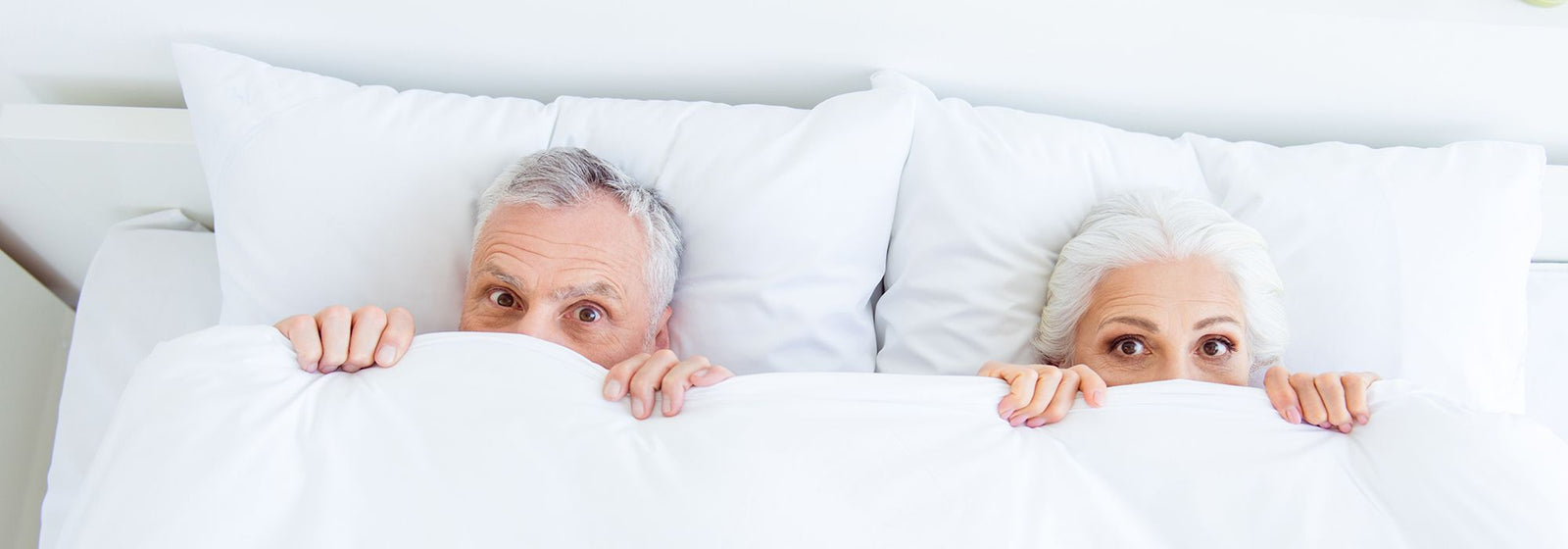Are we really having less sex?
A recent study on sex from the Kinsey Institute found the amount of sex that adults and teenagers were having in 2018 and compared that with 2009. They found that partnered and solo sex have seriously declined. The rate of partnered sex of all kinds, from penis-in-vagina (PIV) sex to mutual masturbation was down for both adolescents and adults. British sex researchers found similar results. People are having less sex, especially ages 25 and over and among people who are married or cohabiting. Sounds like no one’s getting it on much anymore. Could that be the case? Yes, but. It’s only half true.
It depends on what we mean by sex
To be clear, we have to go under the sheets a bit to learn more about what the research is actually telling us. First off, most research on sexual frequency is only looking at PIV sex. Penises in vaginas. Sexual intercourse. Pretty cis het and vanilla. They’re not talking about kink. Or anal. Or oral. They’re not talking about the kind of sex that researcher Peggy Kleinplatz calls magnificent sex in her book on lessons from extraordinary lovers. Though we might be having a whole lot less PIV sex, there’s been a rapid increase in a whole variety of sexual practices, including kink and porn. Lucie Fielding, a sex researcher specializing in trans sexuality, says there’s a whole lot of off-label use of body parts going on with sex these days. And that’s part of the big change.

What’s the pandemic got to do with it?
And what about those of us who have been a bit stressed and anxious lately? If you’ve been in a relationship for a long time, are married, or living with someone, you might be experiencing the pandemic as the ultimate depressor. You might be feeling a general lack of desire for anything. Or you may have gotten less interested in having sex with anyone. Especially during the lockdown.
You’d think quarantine and lockdown would be ideal conditions for sex. Less commuting. More time together. But for many people, the pandemic was a major buzz kill. Perhaps it was the stress, perhaps it was their dread of the future, perhaps there were just too many people around and not the ones you want to really be with. Everything has changed. Including the wide variety of ways we relate to pleasure.

Let’s look at pleasure
Early sex researchers, Masters and Johnson, shook the world in 1966 with their human sexual response model. They revolutionized thinking about sex and orgasms. Their linear model was a kind of hill you climb from desire to arousal leading up to orgasm at the top of the hill. In 1974, Helen Singer Kaplan added a resolution phase on the other side of the orgasm hill. Some of their diagrams look like a breast with a nipple on top.
Let’s focus less on spontaneous desire.
Their models for sex begin with desire, spontaneous desire. The kind of lusty, can’t-wait-to-take-my-pants-off-when-I-see-you kind of desire. Their research participants in initial studies were not only heterosexuals willing to be observed having sex in a lab, but those who could be orgasmic just with PIV. What about the other 75% of women who don’t orgasm from PIV? What about those who don’t just start thinking about sex when they see their partner? What about those who’d rather have a conversation first, gain some consent, find out if they’re talking to someone worth taking their clothes off for?
Rosemary Basson developed an even more expansive model specifically for women in 2000 which was non-linear, intimacy-based, and pleasure-focused. Her idea was to center responsive desire with sexual pleasure.

Moving toward pleasure
Responsive desire could be a certain kind of sensual touch or emotion that leads to sexual arousal. As a response. Emotional, physical, and psychological stimuli create the basis for sexual satisfaction. But Basson doesn’t stop there. Her model comes back around to emotional intimacy. Sexual desire comes (!) only after emotional, physical, and psychological arousal. Orgasm may or may not occur. The search for the Big O is not the goal here. The idea here is connection leading to pleasure and satisfaction leading to more connection leading to more pleasure. It’s a circle of interactions. Not linear at all. You get the idea.

Increasing sexual pleasure as we age
Since our bodies are all wired differently for what turns us on and what turns us off especially as we age, take a moment – by yourself -- to consider what gets you excited. Is it the emotional connection? The physical connection? A foot massage? The idea of a swift spanking? Remember that, as we age, our bodies and our sensations change. Research on aging sexually can help us understand our changing sensations. While much of the sex research on aging bodies used to focus primarily on dys-function, and it’s a one-sided view. There is little evidence that physical changes that accompany aging can impact sexual functioning.
My research and others now focus on how to increase sexual pleasure as we age. Instead of focusing on the past, what we’ve lost, and what we can no longer do, we’ve got to start thinking about what lies ahead. Possibilities abound. With a bit of creativity, we can move from intercourse to outercourse. We can become more aware of kink and incorporate that into our sexual play. Think about sexting, new positions, new fantasies. Try some new toys. Start looking at our own and our partners’ bodies with more compassion, kindness, and love. Think of aging as a process of learning more about what’s most important to us. And now, go out there and start enjoying. You deserve a focus on pleasure as you age.


